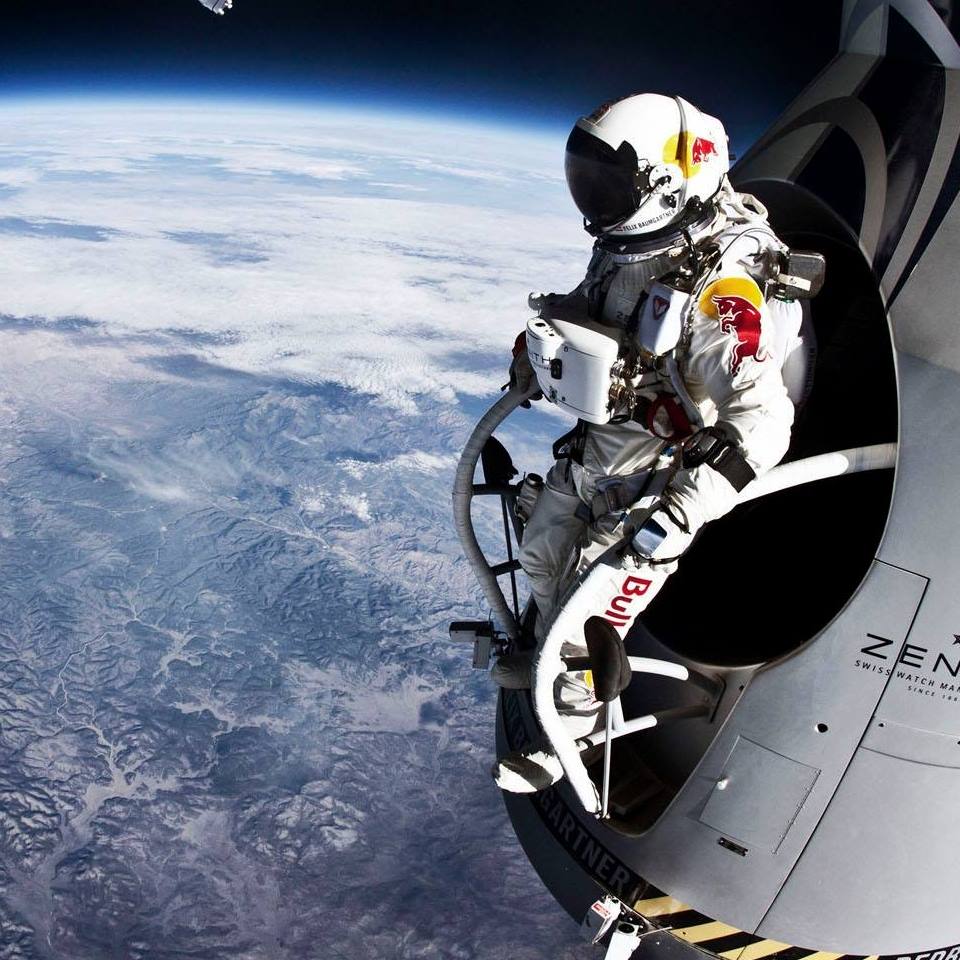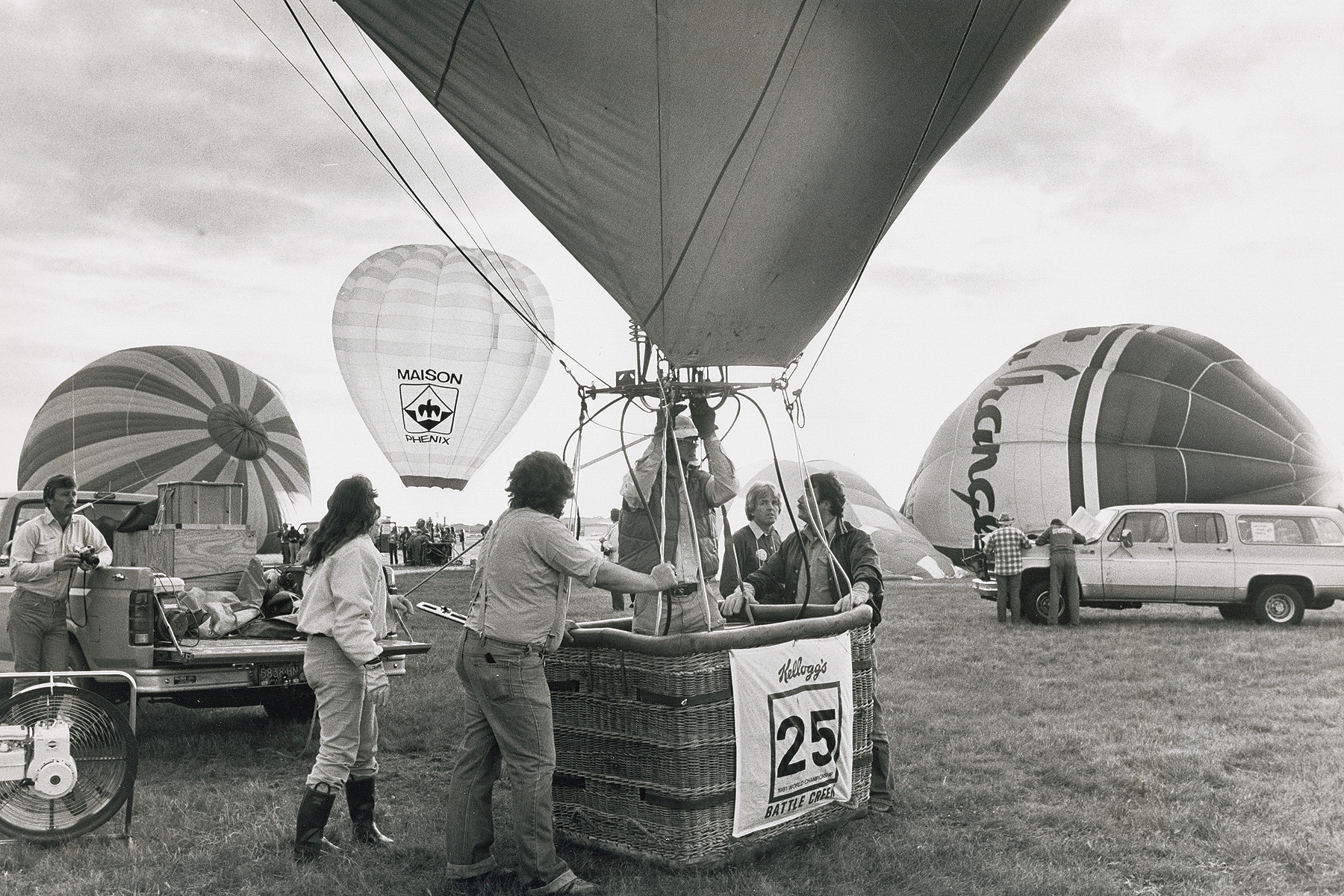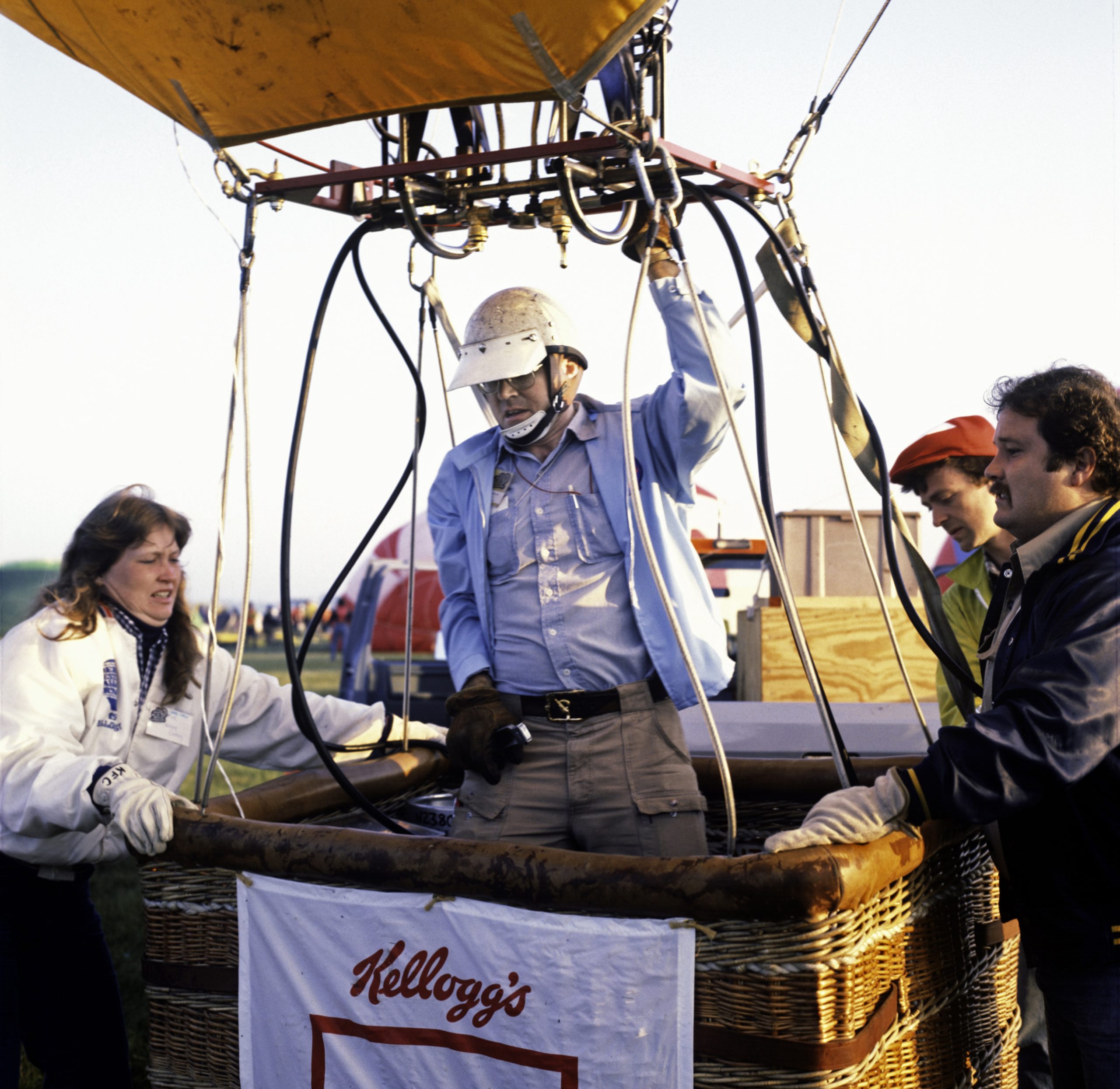On July 17, 2025, the world lost one of its most fearless sky explorers. Felix Baumgartner—the Austrian extreme athlete who once jumped from the stratosphere and became the first human to break the sound barrier in freefall—died in a tragic paragliding accident along Italy’s eastern coast at the age of 56.
Italian firefighters reported that a motorized paraglider had crashed into the side of a swimming pool in the coastal city of Porto Sant’Elpidio. The city’s mayor, Massimiliano Ciarpella, later confirmed Baumgartner’s death in a statement shared on social media.
“Our community is deeply affected by the tragic passing of Felix Baumgartner, a global icon and symbol of courage in extreme flying. He was flying over our town when, due to what appears to have been a sudden illness, his life was taken today. On behalf of the city and its citizens, I offer heartfelt condolences to his family and loved ones,” Mayor Massimiliano Ciarpella said.
Eyewitnesses and early reports suggest Felix Baumgartner may have suffered a medical emergency or equipment failure before his motorized paraglider crashed. “Everything was normal, then it started to spin like a top,” witness Mirella Ivanov told the Associated Press. “It went down, and we heard a roar… I thought it crashed on the rocks. Then I saw two lifeguards running and people rushing toward the scene.”
Italian outlet Il Resto del Carlino reported that investigators suspect Baumgartner may have suffered a heart attack midair, rendering him unconscious. The official cause is still under investigation. “It is a destiny very hard to comprehend for a man who broke records, became an icon of flight, and even traveled through space,” said Mayor Ciarpella.

Felix Baumgartner’s name was forever etched in history on October 14, 2012, when he rose to the edge of space. On that day, the skydiver—better known as “Fearless Felix”—performed a jump that felt like something out of science fiction. Leaping from the stratosphere, he became the first human to break the sound barrier in freefall, reaching supersonic speeds with only his spacesuit for protection.
Before the Stratos mission, Felix Baumgartner had spent decades defying gravity and pushing the limits of human flight. His career spanned parachuting, BASE jumping, race car driving, and commercial as well as aerobatic helicopter flying. He executed jumps from TV towers and cliffs on five continents—never recklessly, but with careful planning, practice, and the precision of a master craftsman.
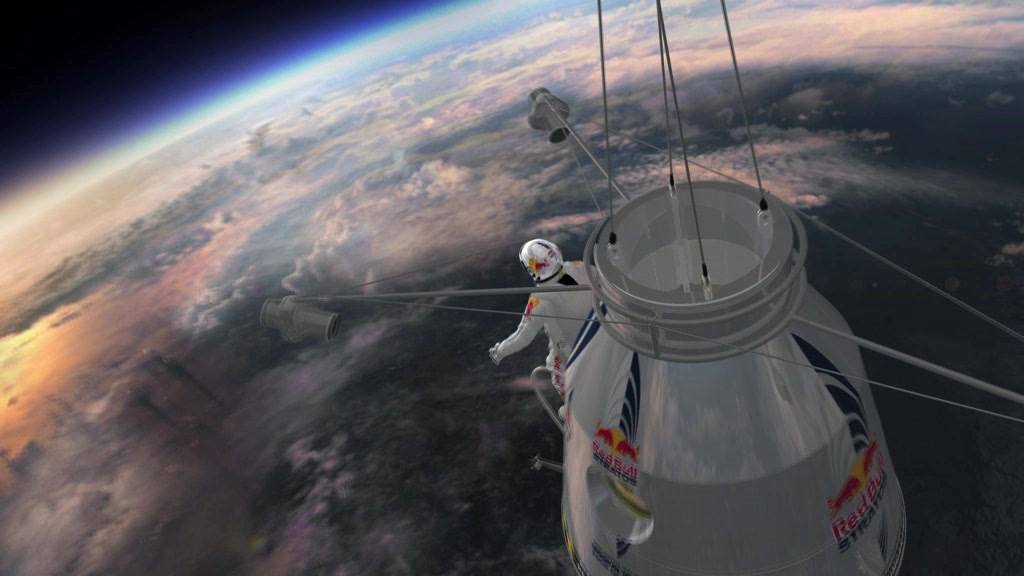
Before he became a household name for his record-breaking leap from the stratosphere, some other breathtaking feats had already cemented his place in history:
1. Jump from the Petronas Towers (1999)
Baumgartner became the first person to BASE jump from the 1,483-foot twin Petronas Towers in Kuala Lumpur, Malaysia. The jump, done without official clearance, demanded careful planning and split-second timing. He had to sneak past security, climb to the launch point under cover of darkness, and leap before authorities could intervene. The feat not only made headlines worldwide but also cemented his reputation as someone willing to push the limits of urban exploration and aerial stunts.
2. Crossing the English Channel with a Carbon Fiber Wing (2003)
Wearing a carbon-fiber wing, Baumgartner leapt from an aircraft over Dover and glided 22 miles (36 kilometers) across the English Channel in under 15 minutes, landing safely in France.
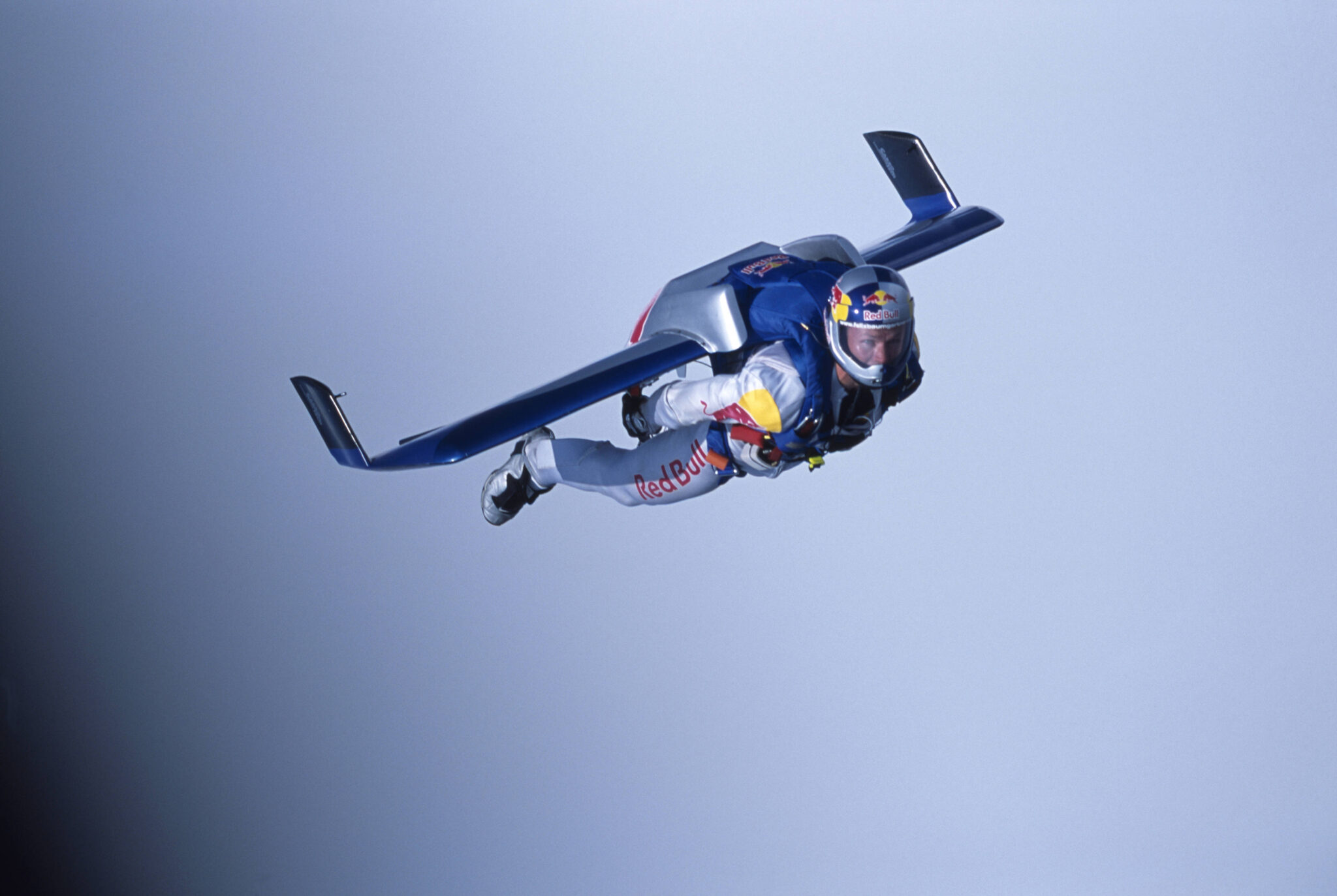
Credit Ulrich Grill / Red Bull Content Pool
3. BASE Jump from Christ the Redeemer (2011)
In Rio de Janeiro, Felix Baumgartner leapt from the 124-foot Christ the Redeemer statue, whose height includes a 26-foot pedestal perched atop the 2,300-foot Corcovado Mountain. Swirling winds and the cramped launch space turned the stunt into one of his most dangerous and technically demanding feats.
4. World-Record BASE Jump from Taipei 101 (2007)
Then the world’s tallest building, Taipei 101 rose 1,667 feet over Taiwan’s capital. Baumgartner’s leap from its pinnacle added another record to his list.
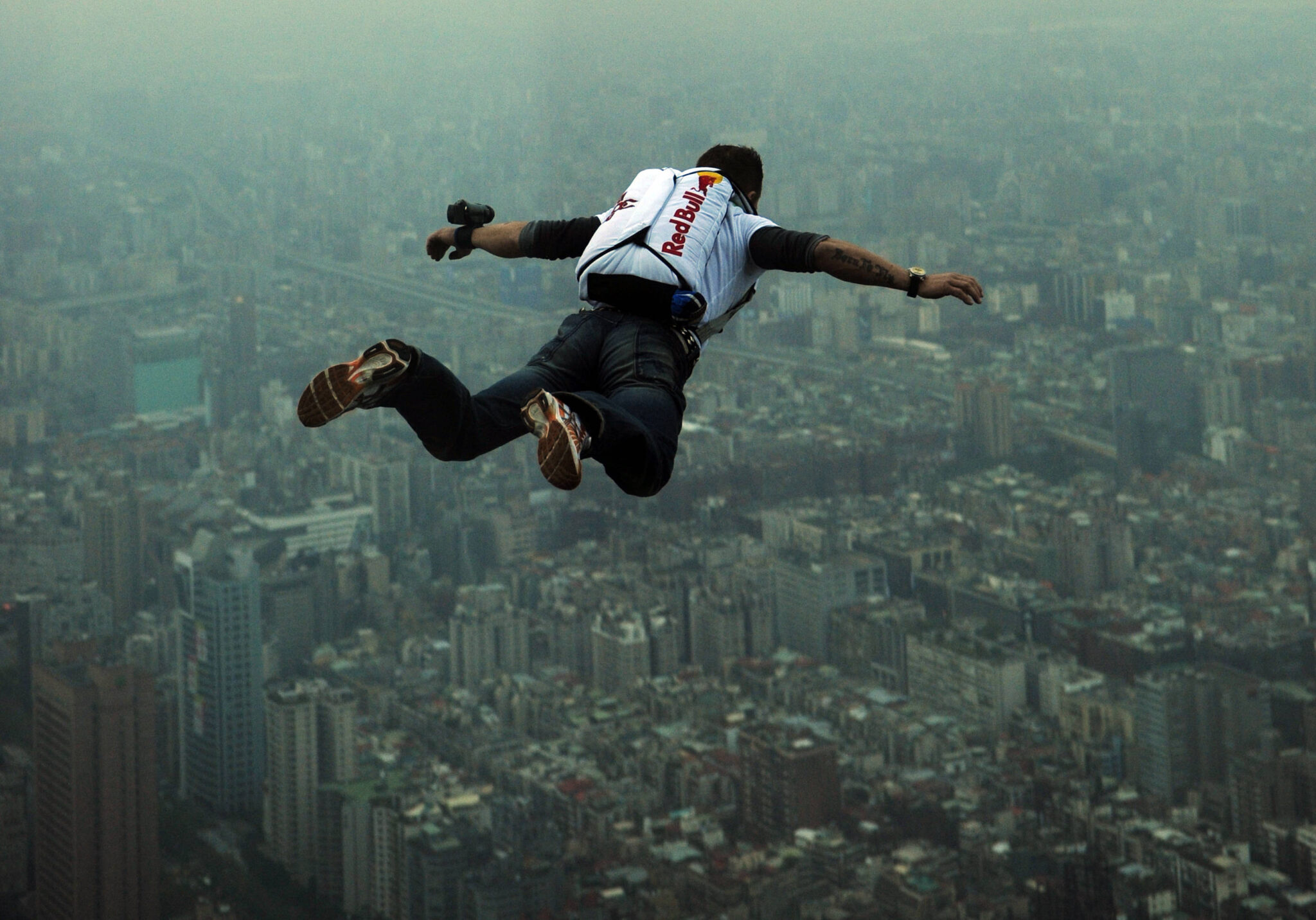
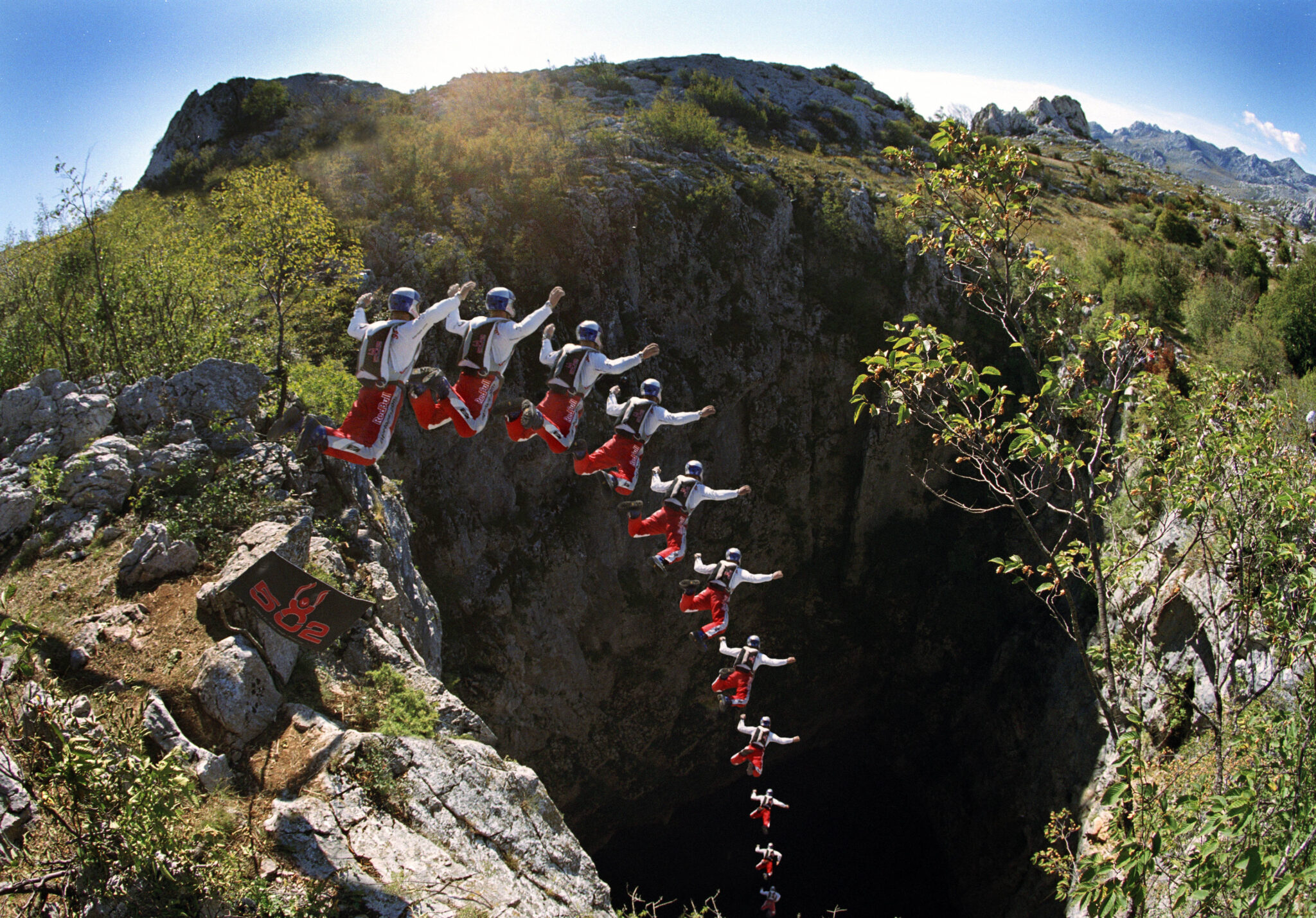
5. The Red Bull Stratos Jump (14 October 2012)
The Stratospheric Leap That Defined Him
Packed inside a small, pressurized capsule and wearing a full-pressure suit similar to those used by astronauts, 43-year-old Baumgartner ascended beneath a helium balloon to a staggering 128,177.5 feet—roughly 24 miles (39 kilometers) above Earth. The climb took more than two hours. At that altitude, the sky fades into black, the air thins to almost nothing, and the curvature of the planet is visible below.
More than nine million people tuned into the livestream to witness the historic moment. At the upper reaches of the stratosphere, Felix Baumgartner stepped off the capsule’s ledge and plunged toward Earth, accelerating to 843.6 miles per hour (Mach 1.25). In that instant, he became the first human to break the sound barrier in freefall—without any engine or vehicle.


For 13 harrowing seconds, Baumgartner spun uncontrollably in a flat spin, his body tumbling through the thin upper atmosphere. Then, with practiced calm, he steadied himself and continued his descent. After four minutes and nineteen seconds of freefall, he deployed his parachute at 5,000 feet and drifted gently to the desert floor of New Mexico.
“Sometimes you have to go up really high to understand how small you really are,” he reflected later.
Despite a career built on daredevil feats, the Red Bull Stratos mission tested Felix Baumgartner in ways few could imagine. His greatest struggle wasn’t the leap itself—it was claustrophobia. During training, Baumgartner admitted to battling panic attacks while sealed inside a bulky, airtight pressure suit for hours at a time. The sensation of being trapped nearly drove him to quit more than once.
He overcame that fear with the help of a sports psychologist, medical specialists, and a mentor who understood his ordeal better than anyone: Joe Kittinger. The retired U.S. Air Force colonel, then in his 80s, had set the high-altitude jump record back in 1960 by leaping from 102,800 feet during a U.S. Air Force project to test stratospheric escape systems. Kittinger coached Baumgartner through every phase of the mission, keeping him calm whenever fear crept in.
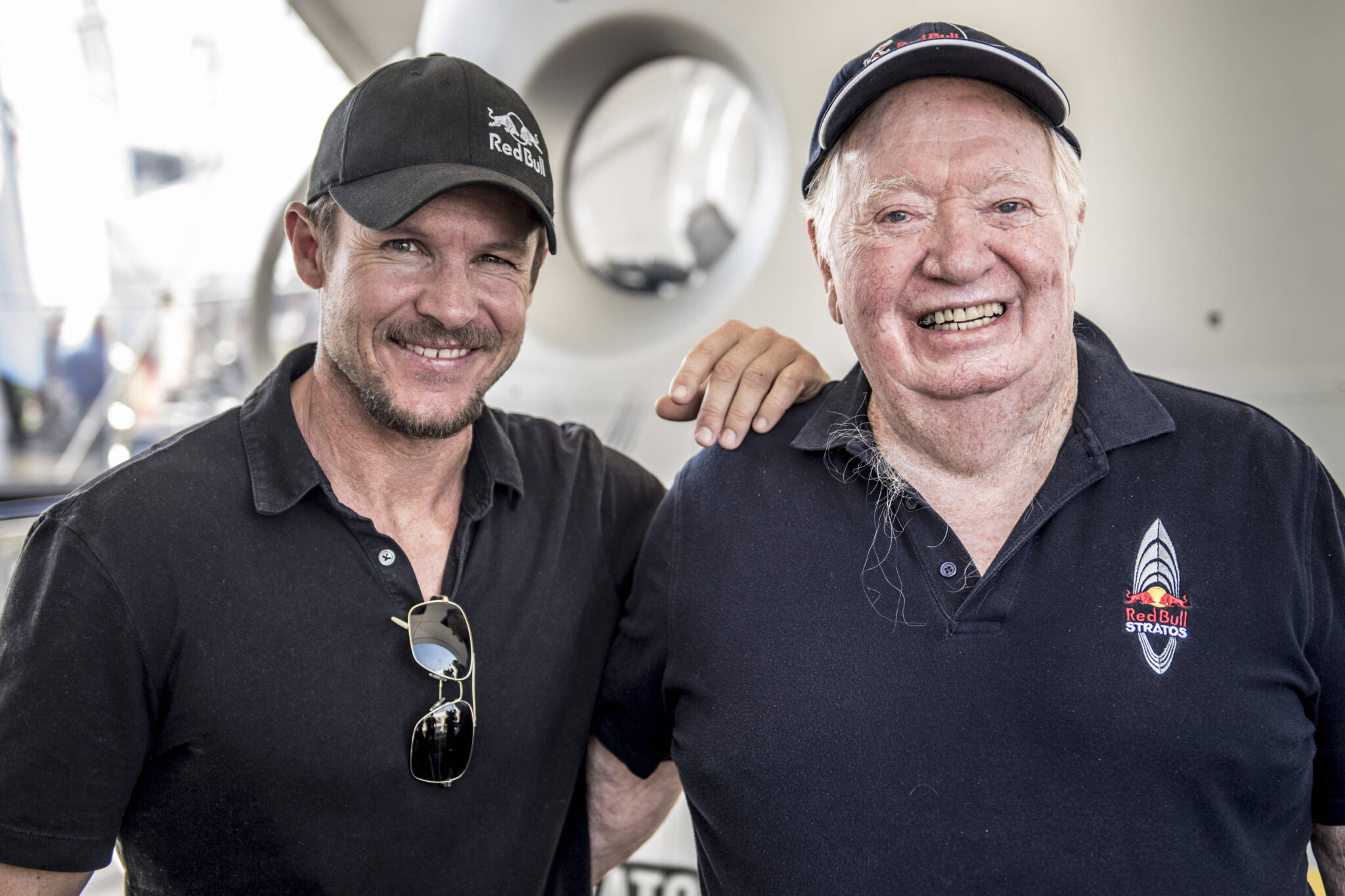
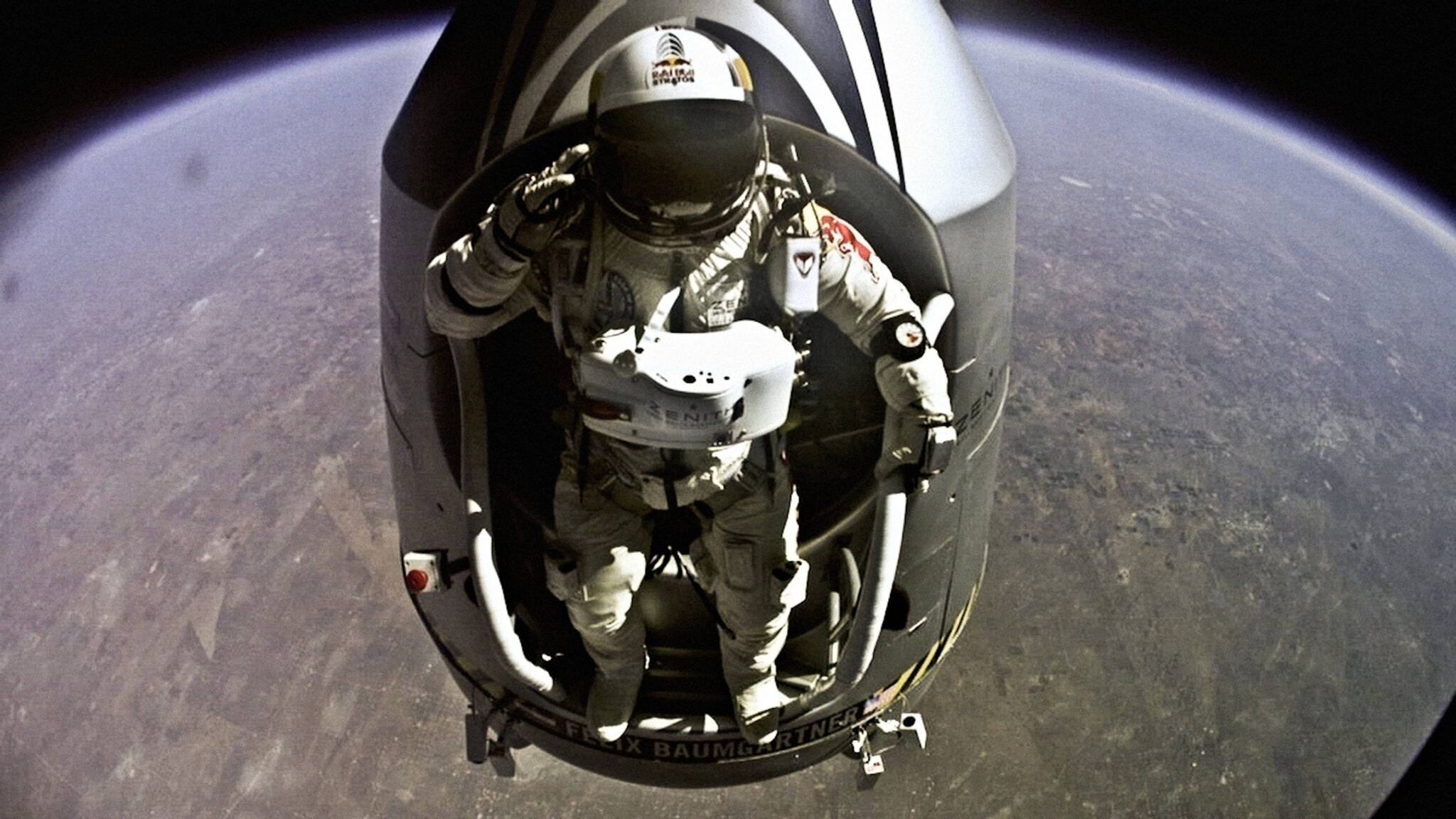
“When I was standing there on top of the world,” Baumgartner later recalled, “you don’t think about records or science. You just want to come back alive.”
For Baumgartner, the Red Bull Stratos mission was the culmination of a seven-year quest. While the jump captivated millions around the world, he and Red Bull stressed that it was far more than a stunt. The project carried both scientific value and practical importance, producing valuable data on:
- How the human body tolerates ejection at extreme altitudes
- The dynamics of supersonic freefall
- Advances in pressure suit and emergency system design
- Improved safety protocols for astronauts and high-altitude pilots
Reflecting on the achievement afterward, Baumgartner summed up the magnitude of the moment: “Breaking the speed of sound by a human—it’s one of the last firsts.”
His leap stood as the highest skydive on record for two years, until 2014, when American computer scientist Alan Eustace surpassed it with a jump from 135,890 feet, setting new records for both altitude and free-fall distance.
Felix Baumgartner was born on April 20, 1969, in Salzburg, Austria. He grew up dreaming of two things: skydiving and flying helicopters. He made his first skydive at 16 and later joined the Austrian military’s parachute team. Skydiving became his gateway to a career in extreme sports, eventually funding helicopter lessons he once thought were beyond reach as the son of a carpenter and homemaker.
Over the next three decades, he set 14 world records and earned honors including the Living Legend of Aviation title, National Geographic Adventurer of the Year, and a Laureus Sports Award.
Life After the Edge
After the Stratos mission, Baumgartner declared he was done with high-risk jumps. He shifted focus, becoming a licensed helicopter pilot, flying firefighting and rescue missions in Austria, and competing in endurance motorsports, including the Nürburgring 24-hour race.
Still, he never lost his love for the sky. Paragliding became a peaceful, almost meditative passion—until it took his life on July 17, 2025.
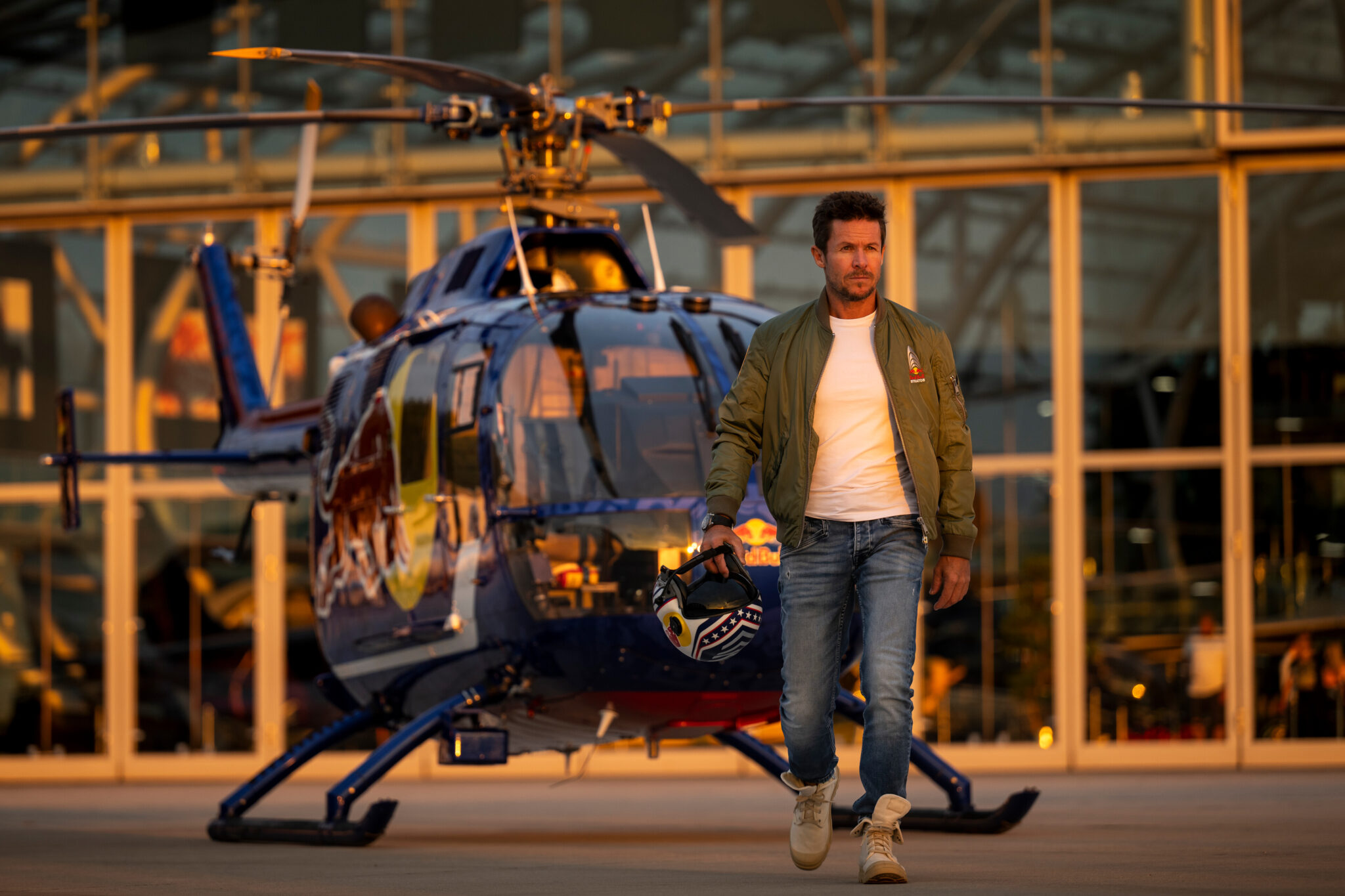
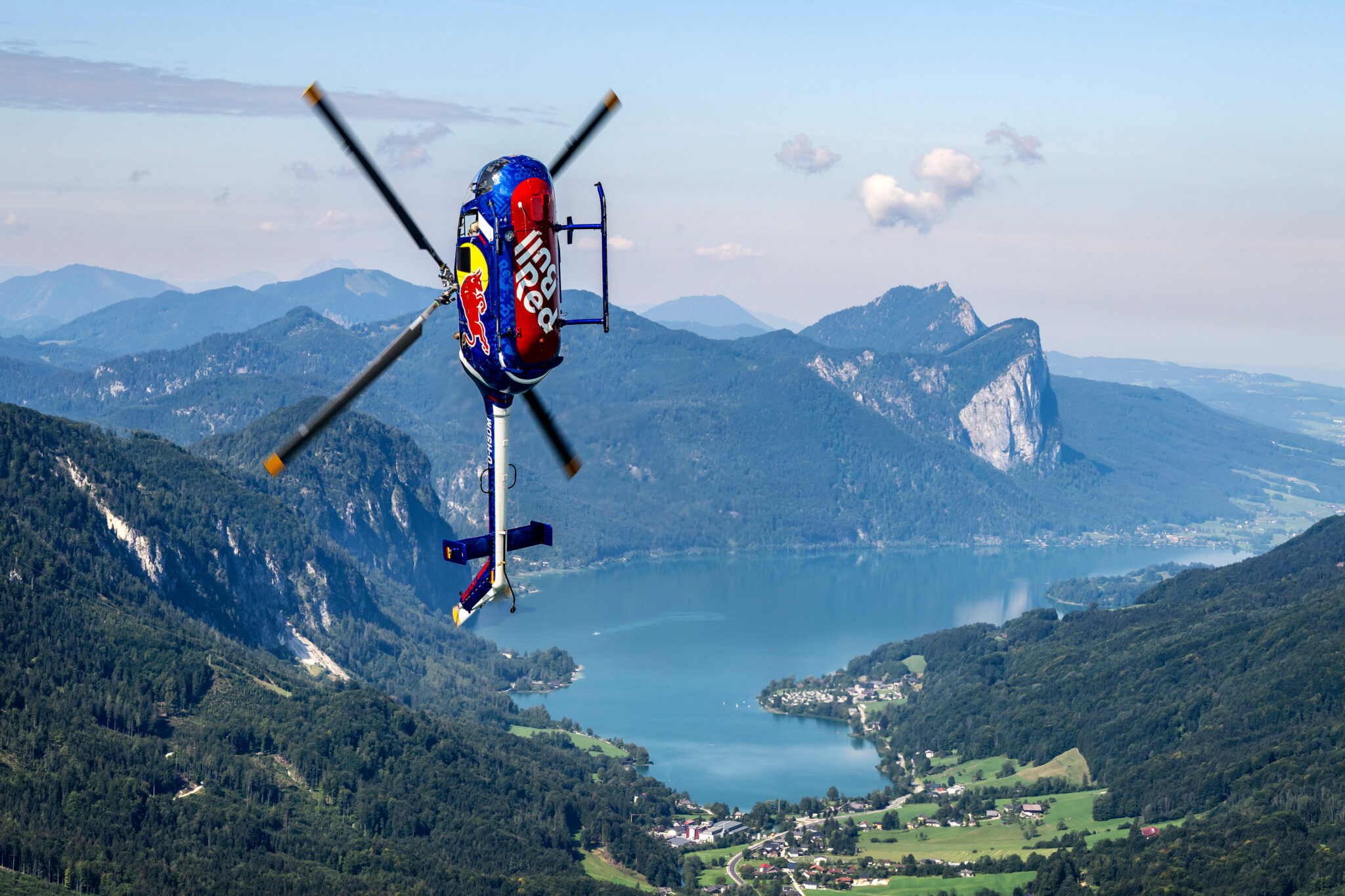
A Life Remembered
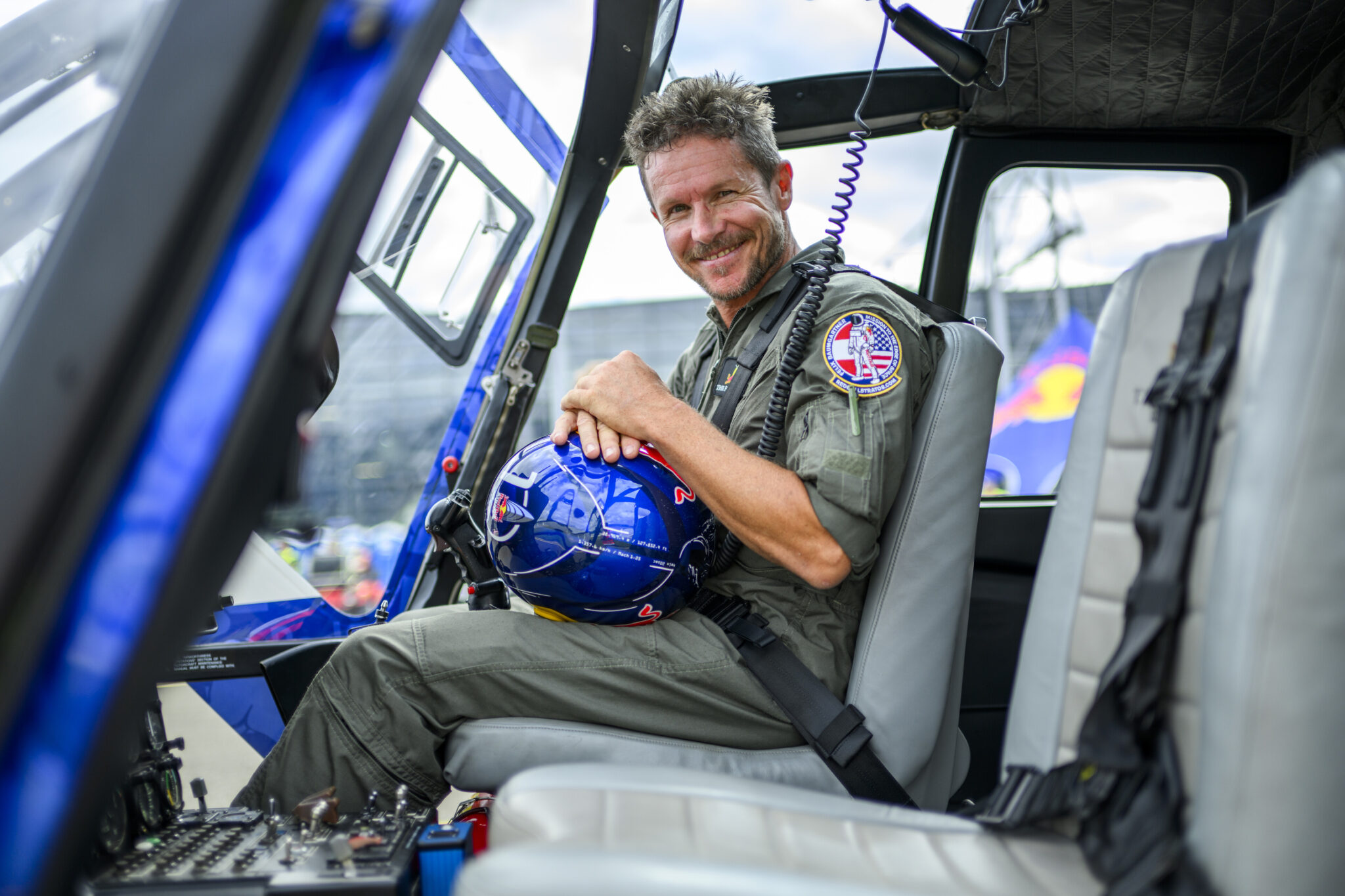
In a tribute shared on its website and social media, Red Bull wrote:
“We are shocked and saddened by the loss of our longtime friend Felix Baumgartner. Felix was ‘born to fly’—determined, meticulous, and generous, inspiring many with his passion. We remember him as a devoted friend and family man, and we send our deepest condolences to his loved ones. Felix, you will be deeply missed.”
Baumgartner once reflected on his life with words that now feel prophetic:
“I believe in God, and I truly think God has a plan for everybody. For me, it looks like I’m becoming an astronaut—locking myself in a capsule, rising to 130,000 feet, sliding the door open, bailing out, and becoming the first human to break the speed of sound in free fall. That’s His plan. That’s probably my last call to accomplish. To me, the Red Bull Stratos project is the biggest thing I can do.”
Felix lived by that belief—risking, daring, and achieving feats few would even dream of. His passing in a paragliding accident, feels like an echo of his words: a life fully lived, on the path he believed was written for him.
Rest in Peace, Felix. Your courage and passion will inspire generations of sky explorers.

